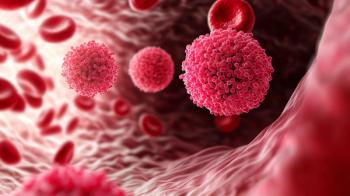
Antibiotic Combinations May Kill Resistant Bacteria
Researchers discovered 94 3-drug combinations that killed 100% of bacteria.
A recent study discovered that combinations of 3 antibiotics are potentially effective at treating antibiotic resistant
In the study, published in Royal Society Interface, researchers grew E. coli in a laboratory, and then treated it with a combination of 1, 2, or 3 antibiotics, with 14 groups of drugs included in the study. Researchers used biology and mathematics to determine which antibiotics would be the most effective together.
Researchers found that 94 of 364 3-drug combinations were able to kill 100% of the bacteria. The researchers believe that if the doses are increased, there may be additional combinations able to achieve the same result.
“Three antibiotics can change the dynamic,” said the paper’s lead author Elif Tekin. “Not many scientists realize that 3-drug combinations can have really beneficial effects that they would not have predicted even by studying all pairs of the antibiotics together.”
There are many different classes of antibiotics, and they all work to kill bacteria in a different way. Some prevent the bacteria from creating cell walls, some disrupt their DNA, and others can stop them from creating proteins, according to the study.
However, there is little research that suggests a 3-drug combination could be more effective than a pair of antibiotics.
“People tend to think that you don't need to understand interactions beyond pairs,” said co-author of the paper Van Savage, PhD. “We found that isn't always so.”
However, they also discovered that sometimes, the 3-drug combinations made the drugs less effective. Researchers believe their findings could help fight drug resistance by allowing physicians to continue using the same antibiotics for the time being.
These 3-drug combinations could also lead to physicians prescribing lower doses of the drugs and lead to a reduction in side effects, according to the study. In the future, researchers plan to make software that would help prescribing physicians to find the most effective combinations of drugs.
“We need sound policy to stop the overuse of antibiotics, doctors to prescribe antibiotics wisely, agriculture to stop overusing antibiotics and researchers to develop new antibiotics,” said the paper’s senior author, Pamela Yeh, PhD. “We need to attack this problem from all sides. We think our contribution will buy time for researchers to better leverage existing drugs and for policymakers to develop better policy about the use of antibiotics.”
Newsletter
Stay informed on drug updates, treatment guidelines, and pharmacy practice trends—subscribe to Pharmacy Times for weekly clinical insights.



















































































































































































































